A red fox on the hunt for voles in fresh snow is a spectacular winter sight – and one you can experience in many urban, suburban and rural areas of North America and Europe.
The red fox’s craftiness is celebrated in ancient fables, outdoor adventure stories and contemporary cartoons. It’s a deserved reputation; seeing a fox is a test of your natural history and field skills. Often, successful fox spotting requires you to read subtle clues in the woods and fields. Even better, finding a fox can be a sensory experience. Sure, you might have seen a fox, but have you ever heard or smelled one?
Fox finding is a perfect activity for a gray February day; there’s nothing like a solo or family critter quest to help forget the pandemic blues. I hope this blog inspires you to get out and look, and also that you learn a bit about fox behavior and biology in the process.
The red fox is one of the most widely distributed carnivores on earth; it’s found across North America, Europe, and Asia, and in parts of North Africa. It has also been introduced to Australia, with disastrous results for native fauna.
There’s a bit of a related myth about red foxes in North America. The conventional wisdom goes like this: Red foxes were brought to the southeastern United States by the British for fox hunting. That’s true. As such, some conclude red foxes are non-native. Many other sources claim that North American foxes are hybrids of European and native foxes.
Recent research presents a different picture.
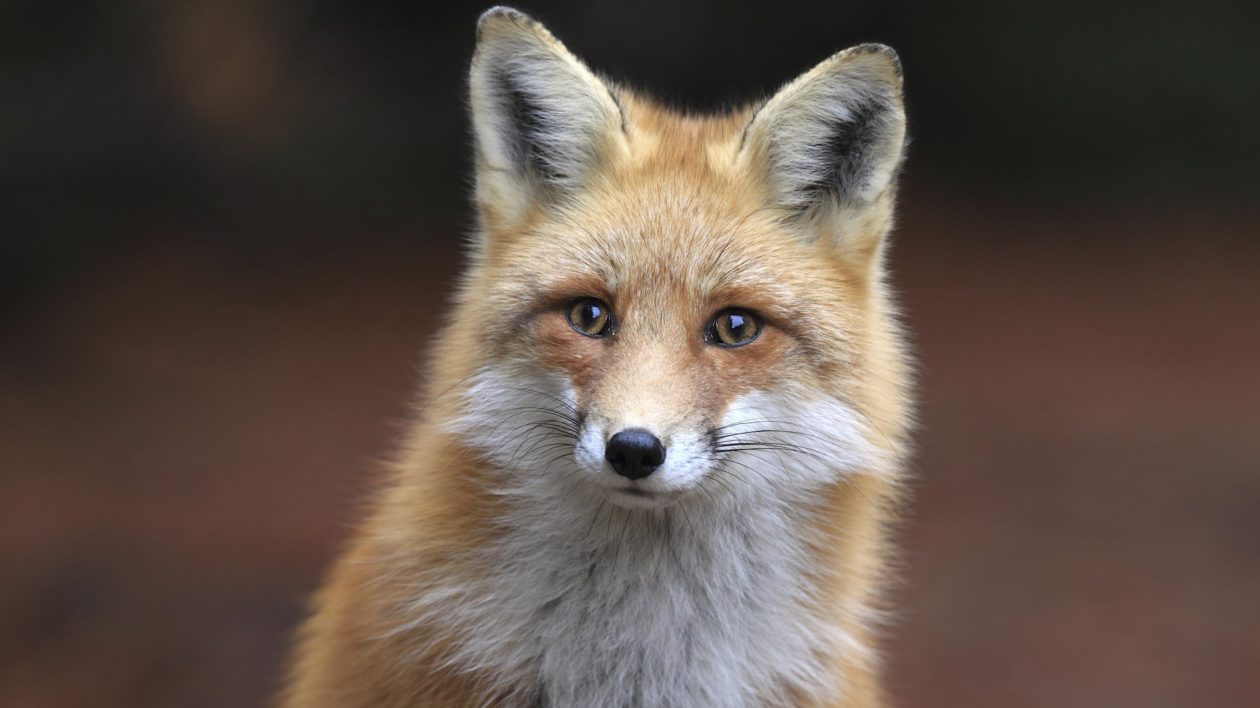
Genetic studies published in the Journal of Mammalogy found no evidence of European fox genetics in North American foxes. Rather, the genetics indicate that native red foxes naturally expanded their range into the southeastern United States. This was no doubt abetted by fewer competing predators like wolves and new habitats like agricultural areas and suburbs.
In the western United States, red foxes similarly expanded their range, but genetics indicate that there are also eastern red fox genetics present – likely due to escapees from fur farms. This may be why in many parts of the Rockies you see red foxes with silver and black coats.
Red foxes adapt supremely well to human-made habitats. They alter their habits and their food to fit the situation. One paper found that, in the United Kingdom, foxes are now found in 90 percent of the urban habitats where they were absent just a few decades ago.
In North America, there’s a good chance there are red foxes near you. You just have to find them.
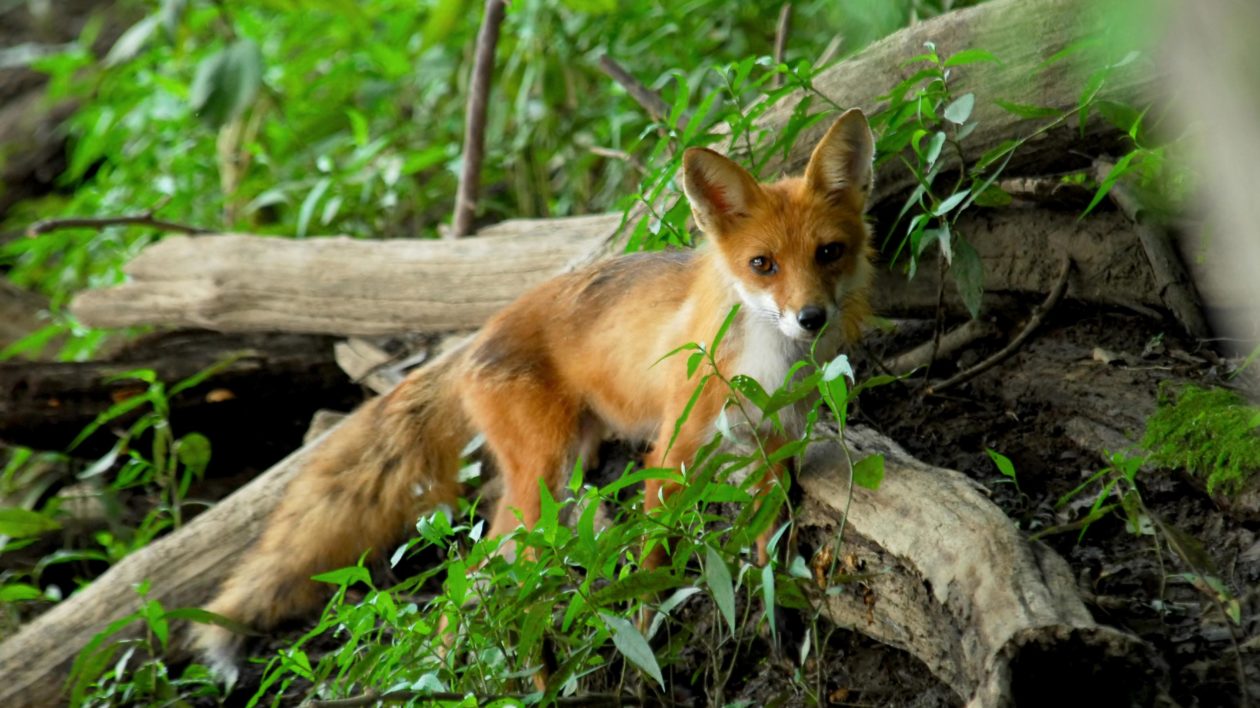
Seeing the Fox
Red foxes are often described as nocturnal, and it is true they are often active at night. As with most things pertaining to this species, there is considerable variation. Red foxes adapt to the situation at hand (or, maybe, paw). Studies suggest that red foxes become more nocturnal in areas where they encounter a lot of people, like cities. They know how to remain out of sight and out of mind.
I have my best luck spotting red foxes at dawn and dusk, when they are actively hunting. In the snow, a red fox will often move along, listening for rodents. If prey is heard under the snow, the fox leaps into the air and dives in, often emerging with an unlucky mouse.
If you walk quietly, or are quietly tracking, you may see a red fox resting on a mound of earth. They often sleep outside on a warmer day, with their head resting on top of their tail.
Come February, the red fox is either beginning the mating season or soon will be. This means you might sight one at any time of day.
Seeing wildlife is a skill you learn by practice. You are not looking for the whole animal. You’re looking for a movement, something that seems out of place, a flick of an ear, a swish of a tail. The red fox has the benefit of often being a striking color, and also being nearly unmistakable. The best advice I can give is to slow down. Really slow down. And be alert.
But if you don’t see a fox at first, well, there are clues you can follow. This is where fox spotting gets fun.
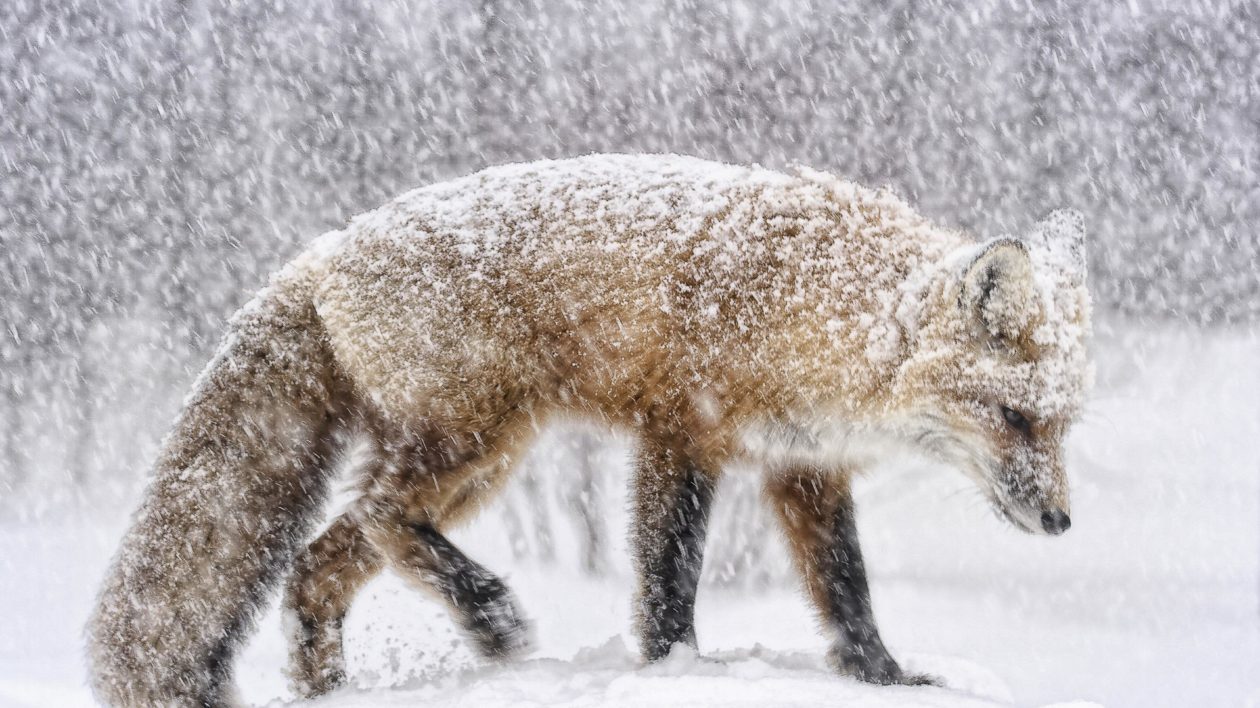
Tracks
Tracking is the perfect winter activity for kids. Tracks tell stories, and there’s the element of adventure as you try to catch a glimpse of the animal. And few critters are as tracker-friendly as the red fox.
The red fox’s tracks are distinctive: little round pads that are “single file” – the tracks lined up neatly behind one another. To me, they resemble a dainty dog.
If you follow canine tracks much, you notice that dogs and coyotes appear to be easily distracted, and their tracks wander accordingly. A red fox’s tracks give the impression of a creature that knows exactly where it’s going – and it’s not messing around.
This makes fox tracks fun and easy to follow. The straight tracks leading across a field make following a breeze. Track slowly, and scan ahead of you: you may catch a glimpse of the fox hunting or even resting. Sometimes, a curious fox – aware that you’re on the path – will stop and look back, offering a special reward.
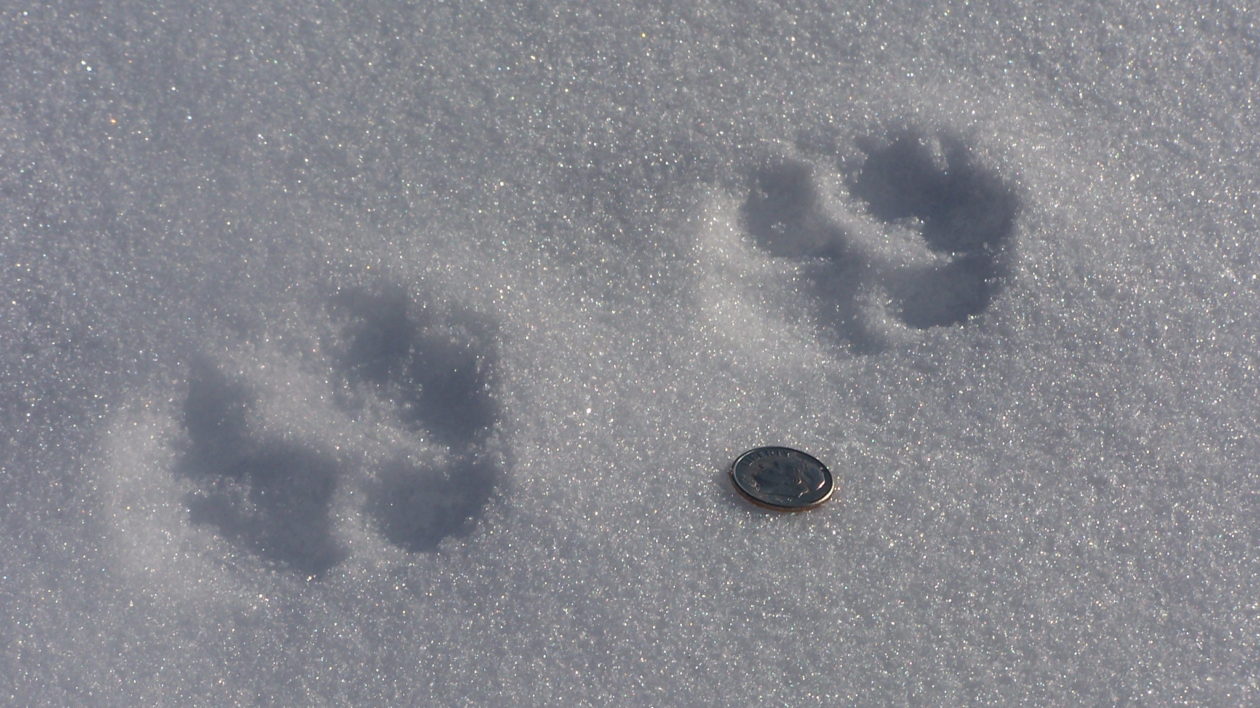
The Scent Trail
As you track the fox, you might actually catch the scent of the animal. That’s right, you can occasionally not only see a fox, but smell one. That’s because the red fox leaves behind a prodigious amount of scent marks. This is an important way for a solitary animal like a fox to communicate information to other foxes.
Foxes leave scent to mark territories and to announce their availability for breeding. Their territory marking is extensive, with some research finding a fox can mark up to 70 times an hour.
The musky scent has a hint of dog and a stronger dose of skunkiness. If you’re tracking, you might see a spray of urine in the snow, or just detect a faint scent. A fox will often mark a slighty elevated landmark like a rock pile or stump.
Red foxes eat carrion, and you may notice the scent around bits of food. For a territorial animal, you might believe that the fox is marking off its food. But recent research finds that the foxes scent mark the inedible bits of carcasses and carrion. Why mark off food that other foxes won’t eat?
Research found an intriguing answer. The foxes do this as a way of cooperating with other foxes. It’s basically a way of announcing: “Don’t waste your time with this; it’s not food.” As humans, we often assume that solitary wild animals are anti-social. As with many of our assumptions about animals, a growing body of evidence suggests we’re wrong.
Even solitary foxes, benefit from cooperating with others of their kind. This has also proven to be the case with red squirrels and likely other species.
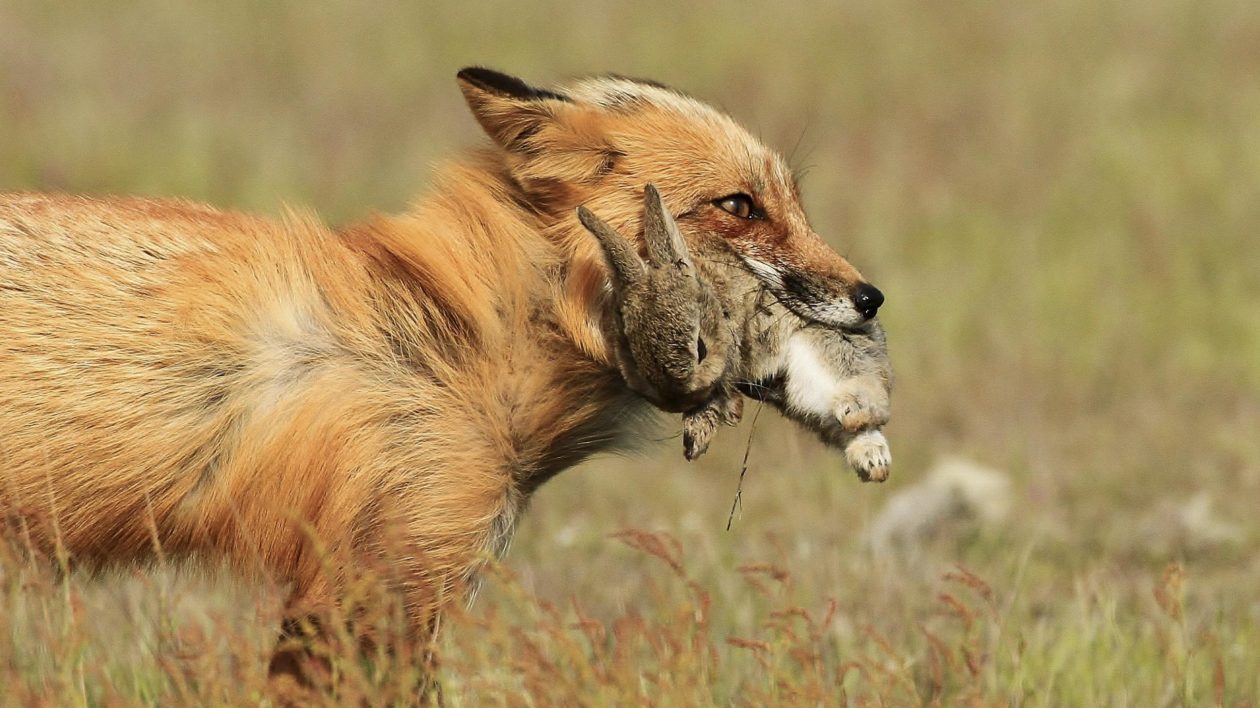
What the Fox Says
By now, that viral video about what a fox says has blessedly faded from the collective memory. (And apologies if you’re now hearing that song in your head). There remains a perception that, in the real world, foxes don’t say much, which isn’t true.
They’re vocal animals, with as many as 20 different calls recorded. Most are, indeed, quite subtle barks that you are unlikely to hear. Popular Science describes a bark that sounds a lot like an owl that foxes use to identify themselves.
At this time of year, the sound you are most likely to hear is a mating “scream” used by vixens and occasionally males to attract mates. For human sensibilities, this is not one of the fox’s more endearing traits.
The sound is alarming if not downright terrifying. National Geographic describes it “as if Jack the Ripper is roaming the streets” while Popular Science graphically describes it as “a shrill, hoarse scream of anguish, it sounds more than anything like a human baby undergoing some kind of physical torture.”
So, yes, it’s unpleasant. Really, really unpleasant. Sometimes you will hear the screams moving down your street at night, something to make you bolt up in bed. No need to be alarmed. It’s a fox on the prowl.
Stopping by the Woods on a Snowy Evening
I’ve been strolling along the greenbelt near my home in Boise, Idaho, for the past 20 years. It runs through a couple of nature preserves, so in the evening there is always something to see and observe. This is my exercise but even more it’s a way to keep tabs on the local wildlife. Many of my Cool Green Science stories originate on these walks.
For me, a February evening may be the best time for wildlife observation. Owls hoot from the trees, and the whistling wings of goldeneyes echo from the river. A herd of mule deer browses and Cooper’s hawks swoop in on quail.
For years, I could reliably sight red foxes at this time of year. Lately, it’s rare that I spot one, but I often see (or, more likely, hear) coyotes. It’s tempting to make a connection here, but that would be a mistake. On its own, nature observation is not research. By contributing to citizen science efforts and reporting observations, individual sightings can contribute to scientific or conservation efforts. But too often, I see other outdoor enthusiasts making casual observations and drawing big (and often wrong) conclusions.
It turns out, the research shows that coyotes do often compete and displace red foxes in rural areas, where the two animals both prey on rodents. In more urban areas, though, the opposite is true. Even though the foxes and coyotes might be sharing the same spaces, they actually coexist better. That’s because coyotes still target rodents and small prey, whereas red foxes often shift to garbage and unguarded pet food.
Where have my local foxes gone? I’ll keep looking and keep reading. Wildlife observation is one of my life’s great joys. It is made all the better by reading and researching what is going on around me. It is an endless topic, and it can begin right outside your door. Get outside and go encounter the fox. Let me know what you find.
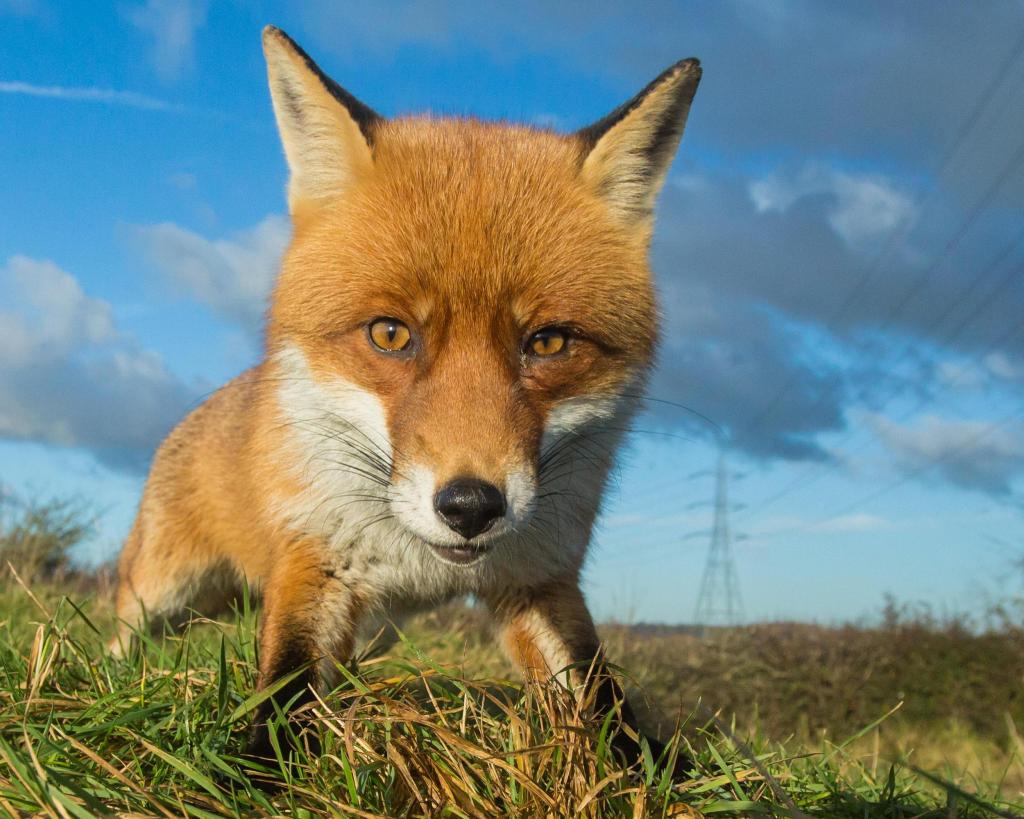



At 11 pm glanced out my upstairs window and saw a Fox! Trotting across our city of Ann Arbor neighborhood street. I think it headed into the next door neighbor’s yard. I’ll check for footprints tomorrow. So beautiful—the long bushy tail, pointy face, gorgeous coat.
Exciting ⛄️
Mr. Miller,
I read with great interest this article on the red fox. I routinely enjoyed greeting a male whom I called “Arthur” each morning and his vixen “Claire” on morning walks in my Annandale, VA neighborhood.
This was until a developer came and destroyed their habitat and I found “Arthur” dead one day on the side of the road as he had been hit by a car and briefly saw “Claire” a few weeks later dashing through what was left of a few trees.
I wonder if she will find another mate as I believe they had 2 kits. Does this happen at all ? Just wondering as I continue to keep my eyes peeled particularly during the dawn and dusk.
My daughter, who is teaching in the MFA writing program at Boise State University, just reported that she has three foxes in her backyard (one looks like a silver fox variant). She sent us photos. I was looking up vixen screaming to send to her, and stumbled on your blog!
Thank you for this article. It identified the scream I heard in my woods about 10 days ago. I live in central Va. at the edge of 75A. of mature hardwoods bordered by farms, w/ a neighbor who has geese & guineas. I know the sounds of a juvenile great horned owl begging, & barred owls, & raccoons. But this was a scream like the one in the video here, like nothing I ever heard before. And it came from an area E of the house where I’ve seen fresh-dug holes that I attributed to a skunk. Apparently, not all the skunk-smell I’ve noticed as I walk around the place is from skunks!
By the way, you might be interested in this article on red fox genetics:
https://www.mammalogy.org/articles/origin-recently-established-red-fox-populations-united-states-translocations-or-natural-ran
So why do HUMANS make uninformed/uneducated decisions on any species much less our own…???…
While visiting London, I saw fox eating from trash on our street in Notting Hill.
That was some interesting screams. They sounded human. Sounds like that Fox was being attacked or something similar. Never realized a sound like that could come from a small animal like a full grown Fox.
Thanks, Best..
Brush piles and wood piles are good places to see fox in the early evening. Last week, immediately before the ice and snow hit us in Texas, I was taking a co-worker home on a long drive through his fields. My lights picked up a gray fox hunting, and we watched from about 500 ft away with the beams. I even tracked him slowly with the headlights as he moved from one brush pile to another to the wood pile, inspecting in and under and around each one. Didn’t phase him a bit, although I may have impacted his hunting ability. He marked each spot, and then moved away up a slim trail into the woods. This all took about ten minutes. Several years ago, when I was a ranger with TPWD, I used to love to get to work in the dawn, and take the four-wheeler or truck out on the park roads to see what I could see before everyone else got there, and before campers woke up. One morning, I saw a great commotion in the trees that hung over the road at a bar ditch. I was only going 5 mph, so I coasted to a stop in the middle of the road looking down the hill. Right at eye level, where the trees met and were tied together with massive mustang grapevines, was a fox balanced in the limbs eating grapes. I kid you not. Just like Aesop’s fables! I watched that fox for the longest time, until it ate its fill, and it turned around like a cat and made its way just a neatly as you please across that road like a tightrope walker, all the way to within about four feet of the ground, before leaping off and disappearing into the underbrush. No one believed me. They always complained that I kept seeing cool things that no one else did. Maybe it was because I took the time to look and to be quiet about it. 🙂
Thanks for this. I am fortunate to live in a house (in central NY state) where, from my back window, I can occasionally see a red fox traveling back and forth just inside the not too distant tree line. We have recently moved, just a few short miles, but at our other house we often had a Grey Fox visit. One spring/summer we were treated to seeing the vixen bring 3 pups to eat corn under our bird feeders. In drought times we always have a shallow pan of water out somewhere for bird and beast. My wildlife sightings make life interesting. We all belong to the same web.
I agree with your penultimate paragraph but my observations suggest a bit more. Because I have written nature columns for local newspapers for over thirty years, I have received many wildlife reports from readers that supplement my own observations. These suggest that indeed the fox population in urban areas is increasing while it is decreasing in rural areas. But thirty and more years ago both fox and coyote urban populations here in the northeastern US were near zero. In fact coyotes were rare anywhere. So the foxes, again my reports suggest, entered suburbs and even cities first, retreating from the coyote newcomers who were at first just taking over rural areas. But now the coyotes, having populated the countryside, are spreading to urban areas as well, and I wonder if, long term, their differing prey will serve the foxes here.